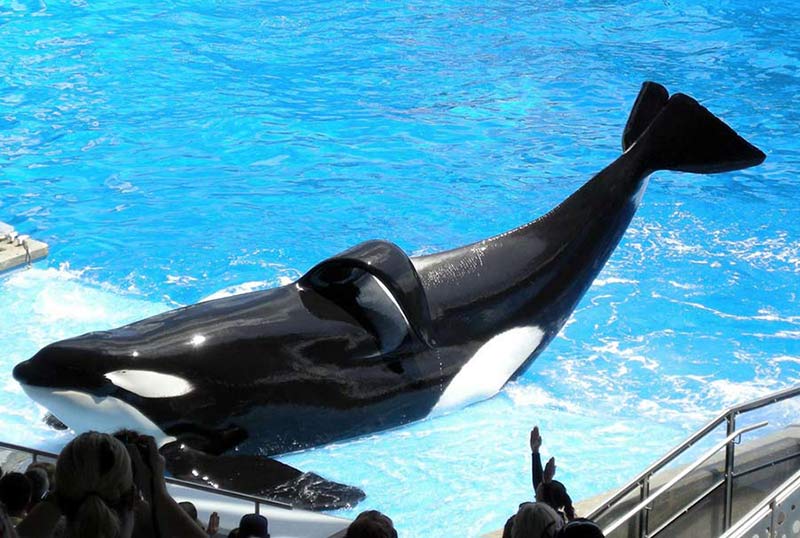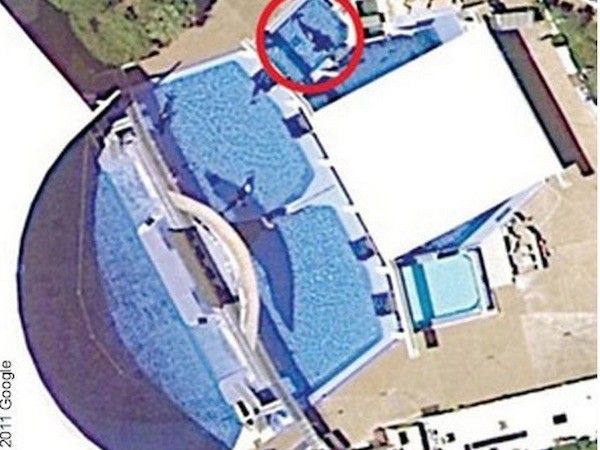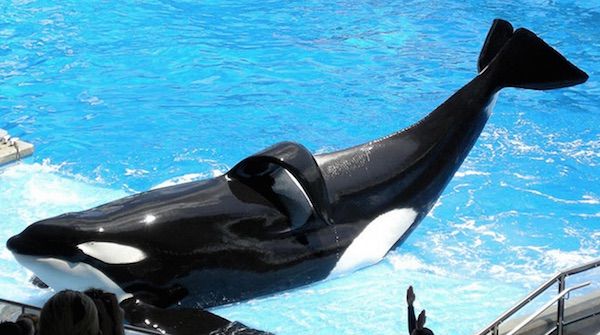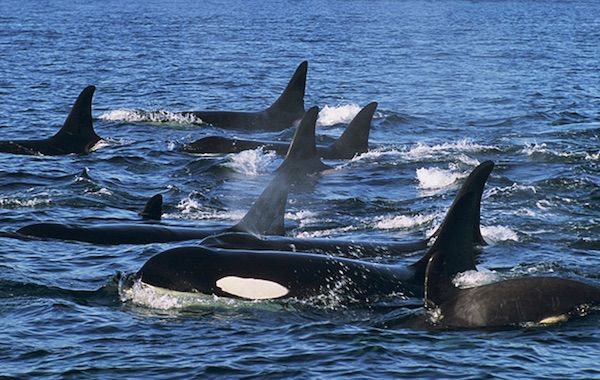Free Willy came out in 1993, did we not learn anything???
Recently after watching a documentary called Blackfish, (which I highly recommend by the way), I came to learn about the horrible treatment of Orca Whales at SeaWorld and other water parks around the world.
I have also had my own experience seeing distressed sea animals kept in confined places and forced to perform tricks for food and even though seeing these animals is an amazing experience, it is beyond barbaric to keep them in captivity.
This article is going to focus more on marine animals, however I really feel that no animal should be kept in captivity unless it is for rehabilitation purposes. All animals are intelligent, conscious beings and deserve the right to be free.
But before I launch into a huge rant about that, I want to share with you my story of seeing animals in waterparks as compared to the wild.
My Experience Swimming With Dolphins
I get terribly sea sick, but I decided to brave the waves and venture out on a sunny Californian day to spot dolphins and whales.
The boat ride was smooth and although I didn’t see any whales that day I did see plenty of dolphins.
Dolphins are majestic and spiritual animals. Being in their presence was mesmerising, they were friendly, happy and curious as to what our boat was doing. They seemed to intuitively know what we were all feeling that day on that boat, and the happier we became, the more they would show off and allow us to follow them.
The Sea Captain was very respectful of the dolphins and it seemed that the dolphins appreciated it. The dolphins looked like the friendly animal I had always thought they had been.
Flash forward a few years and I was travelling through Mexico in a town called Puerto Vallarta. Just a few hours from there was a resort where you could swim with dolphins.
I debated whether I really wanted to support a company that kept dolphins in captivity, but I brushed my thoughts aside and signed up.
Being sensitive to energies already, I was really, really, really disappointed when I got to the dolphin tank. It looked like a small chlorinated pool and instantly I felt uncomfortable. At that moment I tried to refund my ticket but the company were not having a bar of it, so I decided to just go along.
After a brief introduction we were sent into the water to interact with the dolphins. Suddenly, it seemed like those friendly dolphins in the wild no longer existed and instead I was met with hostile dolphins that were very, very uninterested in interacting with the guests.
Can hostile dolphins even be a thing? In captivity it appears so.
These dolphins were beautiful and powerful creatures and much stronger than I had ever imagined, but their presence made me uncomfortable. I could sense they were not happy, I could sense they were bored and I started to feel nervous.
When the trainers offered the guests to dive with the dolphins I refused, when the trainers offered to hold onto the tail of the dolphin and pose for a picture, I felt unenthused.
The real proof in the dolphins demeanour was seen during the “free play” time, where the dolphins were allowed to interact and swim with the guests. Instead of being the happy, friendly dolphins that they should have been, they kept to themselves and refused to interact with the humans.
They were simply not interested. They were bored. They were frustrated and I felt their hostility. And who could blame them?
If you stayed in a small tank no bigger than the average household swimming pool, away from your family and natural environment and were forced to perform tricks for food, you would also go crazy and feel hostile!
This experience was enough for me to never set foot in any waterpark that keeps animals in captivity, however watching Blackfish has helped to cement that idea even more.
The Truths Revealed from Blackfish
Blackfish is a documentary based on the Killer Whales or Orca’s that are held in captivity at the waterpark, SeaWorld.
SeaWorld is one of the most famous waterparks in the world and brings in billions of dollars each year.
In this documentary, experts and former employees pull back the veil and reveal the horrible truths of how this corporation really chooses to treat their animals.
The treatment of these animals is so appalling that it has lead to several deaths- trainers and orcas included.
Here are the most horrific things that SeaWorld do to their Orcas:
Orcas are Kidnapped from the Wild and Transported Long Distances
It is believed that more than five Orcas currently at SeaWorld were kidnapped from their homes and separated from their families.
Only the babies are taken from the pods, causing huge amounts of distress for the mother, father and child. Many whales are also killed in the process and once captured, they are confined to small concrete tanks.
Most of the Orcas at SeaWorld were captured in Iceland and travelled hundreds of thousands of miles in small tanks, covered in lanolin to help them survive outside the water.
Orcas are Kept in Cramped, Inhumane Conditions
Orcas are used to swimming around 100 miles per day, but in SeaWorld there is barely enough room for the Orca’s to move, let alone swim.
Because Orca’s are pack animals, they can often be bullied by the other whales in the tank and with such small spaces, the whales have no where to go to protect themselves.
In fact, many whales at SeaWorld have been spotted with teeth marks all alongside their body from other whales.
These small, cramped and stressful conditions often lead Orca’s to have a much shorter lifespan than they would in the wild.
Orcas are Deprived of Food
In order to keep the Orca’s engaged in performances and shows, trainers are often instructed to deprive the Orca’s of food.
Being deprived of food makes the whales more likely to perform and follow instruction. This type of mind control causes huge psychological distress for the whales.
Documents have also been released that many whales at SeaWorld are put on antipsychotic drugs in order to prevent them from acting out.
These drugs included benzodiazepines to help with anxiety, antacids to treat ulcers caused by stress and their environment, antibiotics to treat consistent infections from poor immunity and contraceptives to help stimulate regular ovulation in females.
Of course, Orca’s in the wild definitely don’t survive with medications, so if they were looking after the Orca’s so well, why on earth would they need these types of drugs??
Orca’s are Sexually Violated for Breeding
In the wild, Orca’s are free to choose their own mates and reproduce by choice. In captivity however, trainers are instructed to masturbate adult male whales against their wishes. These whales are forced to lie on their backs and are then molested by trainers in order to collect their sperm.
Once collected, their sperm is used to artificially inseminate females against their will. So much inbreeding has also occurred at SeaWorld, which is of course not natural in the wild and has caused many health concerns.
The largest and most famous whale at SeaWorld, Tillikum shares the same genes as nearly 54 percent of all the whales at SeaWorld and is still being used by the Corporation to breed more. This is despite the fact that Tilikum has displayed aggressive behaviour and was responsible for two deaths, one in 1991 and the other in 2010.
Orca Deaths and Injuries are Covered Up
Since Orca’s have been held in captivity there have been numerous deaths and injuries however, SeaWorld is very quick to blame the trainers rather than take responsibility for their inhumane protocols.
One of the most recent attacks involved lead trainer, Dawn Brancheau who was pulled underwater by Tilikum, dismembered and then drowned in a vicious attack.
While SeaWorld blames the trainer for misconduct, those who worked along side her know that she was extremely safety conscious and had what they believed to be a great relationship with the whale.
John Hargrove, a former trainer at SeaWorld also has this to say about his time working with the Orcas-
“After all the years of experience I had, I saw the psychological and physical trauma that results from captivity. A massive corporate entity is exploiting the hell out of the whales and trainers. You are nothing more than a number on a sheet, and if the moment arises, you will be thrown under the bus and even blamed for your death.”
It is also important to note that there are no known acts of aggression with Orca’s found in the wild.
Orca Trainers are Kept in the Dark
Many trainers who worked alongside Tilikum were not even told that he was involved with the death of a trainer back in 1991. It wasn’t until the incident in 2010 that many of them were even made aware of how dangerous Tilikum could be.
Many reported accidents and near-death experiences were also kept from the trainers and most of them were fed false information about the history of the whales and their health.
Orca’s in the wild live nearly as long as humans however, in captivity they are lucky if they will live over 10 years of age. SeaWorld however, likes to spread misinformation and informed the trainers that they live longer in captivity.
Many trainers have also spoken out about how their jobs were less to do with marine-biology and more to do with performance and how the audience responded to them.
While most of the trainers at SeaWorld seem to take great care of the whales, it is really the corporation that is running the show.
Orca’s in Captivity Have an Abnormally Collapsed Dorsal Fin
SeaWorld has repeatedly spread misinformation, telling people that it is normal for their whales to have a collapsed dorsal fin.
Ask any expert on Orca’s and they will tell you that it is just not true. While collapsed dorsal fins can occur in the wild it is very, very rare and usually indicates sickness of some kind.
Experts agree that a collapsed dorsal fin indicates sickness from being kept in cramped or unnatural conditions. It also indicates a weakened immunity and severe stress.
The Future of Orca’s in Captivity
With so many Orca’s kept in captivity it can be difficult to know what the best solution is for these creatures, however there are many viable solutions for these poor creatures, which includes:
- Stopping the breeding program so the no more whales have to suffer the same fate
- Placing inbred whales that cannot be released into the wild into a sea sanctuary
- Releasing all other whales back into the wild to live out their life freely
In the mean time, really think twice before engaging in anything to do with animals kept in captivity for entertainment purposes and definitely reconsider your vacation to SeaWorld.
The more attention that can be drawn to this issue, hopefully the more can be done to release these beautiful whales back into nature where they belong.
This is a Contributor Post. Opinions expressed here are opinions of the Contributor. Influencive does not endorse or review brands mentioned; does not and cannot investigate relationships with brands, products, and people mentioned and is up to the Contributor to disclose. Contributors, amongst other accounts and articles may be professional fee-based.





